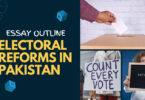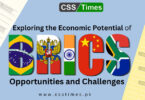“Women are better suited for baby-making than money-making.” It sounds ridiculous today, but myths like this – based on no scientific evidence – drove the decisions of our forefathers (and foremothers) for generations. Even today, around the world girls and women battle commonly held views and beliefs that limit their opportunities and potential.
The truth is, women around the world are resourceful economic agents, overcoming persistent, gender-based barriers every day. Women have demonstrated they can build informal and formal businesses out of very little capital, create networks to maximize limited resources, all while shouldering the traditional responsibilities placed upon them, duties like child- and home-care. Women succeed in spite of laws, policies and institutions that hold them back, but it is a constant struggle. It is time to create supportive environments for women to thrive economically, and bust these myths once and for all.
The myth: investing in women doesn’t pay off
The truth: closing gender gaps will actually lead to an increase in global GDP
A recent McKinsey Global Institute report found that if women play an identical role in labour markets to that of men, as much $28 trillion or 26% could be added to global annual GDP by 2025. Now that’s a payoff we can all get behind.
The myth: gender inequality is not an issue in developed countries
The truth: gender inequality remains high around the world
Although many countries have made progress on some aspects of gender equality, inequality remains high. In the US, there are just 66 women for every 100 men in leadership and managerial positions, and women do almost double the unpaid care work that men do. Meanwhile, in Europe the situation for women is even less promising. Men hold 89% of executive committee jobs at the top 100 companies. There’s work to be done.
The myth: women’s income is not used any differently than men’s income
The truth: a greater percentage of women’s income is reinvested in their families and communities
This spending drives improved access to education, nutrition and healthcare – win, win, win. Evidence also shows that it is not merely a woman’s increased income, but rather her control over that income that helps her achieve economic empowerment. A study in Brazil showed that the likelihood of a child’s survival increased by 20% when the mother made financial choices. These key economic decisions, however, are intricately wrapped into cultural norms around gender, age, ethnic background, health or physical status, and overall social hierarchy.
The myth: women choose to work less than men
The truth: women shoulder a greater burden of unpaid work, and have fewer paid work opportunities
Women don’t work less than men; in fact, they often work more. The issue is that their work is unpaid and often unregistered – rearing children and caring for the elderly rarely produces a paycheck. In some regions like South Asia, the Middle East and North Africa, women shoulder up to 90% of unpaid care work. It’s time to balance the scales.
The myth: inequality ends as women’s income increases
The truth: it’s giving women control over income that ends inequality
Evidence shows that it is not merely a woman’s increased income, but rather her control over that income that helps her achieve economic empowerment. When a woman holds the strings to the family purse, that family is more likely to thrive. Brazil’s Bolsa Familia Program, which provides cash transfers directly to the female head of households, accounted for up to 25% of Brazil’s reduction in inequality and 16% of its drop in extreme poverty.
The myth: women’s groups are not necessary for economic development
The truth: women’s groups – including cooperatives, collectives, farmer groups, business associations and trade unions – are often the only path to sustainable economic development for many women around the world.
Women’s groups can offer a safe haven in which women of limited means can pool and maximize resources, manage risk, innovate and experiment, build skills and capacity, mentor and learn from one another, organize and advocate for rights, share care responsibilities, build confidence, and receive key information on everything from market information to nutritional guidance, family planning and reproductive health.
The myth: family-friendly, gender-responsive policies are not worth the investment
The truth: In the US, every $1 invested in family planning results in $7 of savings; in developing countries like Jordan, $1 can result in as much as $16 in savings. The Copenhagen Consensus showed that every dollar spent on modern contraceptive methods will yield $120 in overall benefits.
Companies that invest in family-friendly, gender-responsive policies have found high returns on their investments, including reduced absenteeism and increased productivity. By providing healthcare for women and their children at the workplace, studies in Bangladesh and Egypt point to a $3:17 and $4:17 return on investment.
Harmful myths like these continue to limit women as they seek careers, advance in the workplace, and seek access to capital – especially in the most economically disadvantaged parts of the world. These myths do not just impede women on a personal level, they also hinder our collective progress. The data and research above tell a different story about the exponential power of women. Growth is possible. Prosperity is possible. And it becomes a reality with women in the driver’s seat.
Start spreading the truth.
Book Source:

CSS Current Essays
Book Price: 495
Whatsapp your order at 03000459551 to get book at your doorstep with cash on delivery
Check our Collection of English Essays specially for CSS
- Essay Outline: Electoral Reforms in Pakistan: Necessity and Challenges
- Health for All | Essay Outline for CSS PMS
- Exploring the Economic Potential of BRICS Countries: Opportunities and Challenges
- Art and Morality Essay Outline
- Instruction in Youth is Like Engraving in Stone | Complete Essay with Outline
- Public Office is a Public Trust | Complete CSS Essay
- Essay Outline “Good Governance is deeply rooted in Human Development”
- CSS Essay Outline | The Importance of Water Conservation and Management
- How to Write Effective Essay for CSS Exams
- How to Write Effective Essay on Economy? 7 Steps







